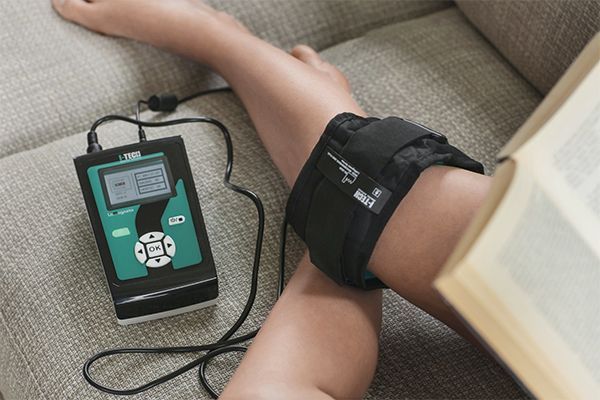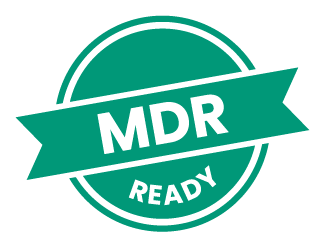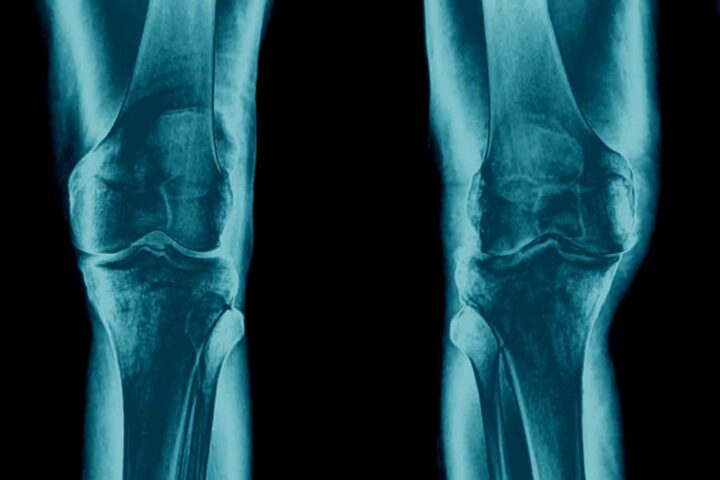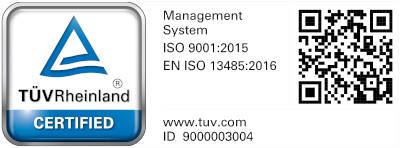L’artrosi è una malattia cronica di tipo degenerativo che colpisce le articolazioni e il tessuto
cartilagineo delle ossa.
Le articolazioni più interessate sono quelle su cui il
carico di peso è maggiore, come le
anche, le ginocchia e la colonna vertebrale.
Sintomi dell’artrosi
I sintomi dell’artrosi sono principalmente dolore, gonfiore e rigidità. Cominciano a manifestarsi intorno ai cinquant’anni a causa del deterioramento della cartilagine e del conseguente sfregamento delle ossa tra loro. In particolare, la frequenza è maggiore nelle donne dopo la menopausa.
Nel caso di persone colpite dalla malattia prima dei cinquant’anni, invece, non vi sono differenze tra uomini e donne. La comparsa dei sintomi, infatti, non dipende da cambiamenti ormonali ma dalle condizioni lavorative e dalle attività svolte quotidianamente.
Questa patologia può insorgere in un’articolazione sana senza un chiaro motivo oppure come conseguenza di deformità congenite, traumi, infezioni, infiammazioni o sovraccarico muscolare.
La differenza tra artrosi e artrite
Prima di descrivere la patologia, è fondamentale sottolineare la differenza tra artrite e artrosi, dato che spesso si genera confusione.
Pur avendo alcuni tratti in comune, l’artrite è una condizione infiammatoria che coinvolge le articolazioni, mentre l’artrosi è una forma degenerativa cronica non infiammatoria.
Ma come capire se è artrite o artrosi?
L’artrite spesso ha sintomi come dolore, gonfiore e rossore delle articolazioni, che possono essere intermittenti o persistere nel tempo.
Al contrario, l’artrosi causa generalmente dolore e rigidità articolare, soprattutto dopo l’attività fisica o al risveglio al mattino, con la presenza di crepitio articolare. Inoltre, mentre l’artrite può colpire a qualsiasi età e può interessare più articolazioni contemporaneamente, l’artrosi si sviluppa gradualmente con l’età e tende a colpire specifiche articolazioni soggette a maggiore usura, come le ginocchia, le anche e le mani.
Tipi di artrosi
Esistono varie forme di artrosi, che si differenziano tra di loro principalmente in base alla zona del corpo interessata.
Questo comporta la comparsa di sintomi leggermente diversi tra loro, ma soprattutto prevede l’utilizzo di cure e rimedi specifici.
Vediamole di seguito.
1. L’artrosi cervicale
L’artrosi cervicale colpisce la parte più mobile della colonna vertebrale. Interessa sia la superficie delle vertebre sul lato delle articolazioni, sia i dischi di cartilagine presenti tra le vertebre.
Le cause dell’artrosi cervicale dipendono da uno stile di vita irregolare o una postura scorretta e non solo dall’invecchiamento. Infatti, si tratta di una forma di artrosi che può colpire anche i giovani.
I sintomi principali si manifestano con una sensazione di dolore e rigidità al collo e alla nuca. Altri possibili sintomi sono mal di testa e vertigini, ma anche nausea, giramenti di testa e disturbi della vista o intolleranza ai rumori. Inoltre, si creano delle protuberanze ossee sulle vertebre, dette osteofiti.
Questo tipo di artrosi tende a peggiorare e a diffondersi ad altre zone, tra cui le spalle e le dita delle mani.
Al momento non è possibile guarire completamente dall’artrosi cervicale.
Il paziente può però affidarsi a rimedi naturali quali massaggi e terapie fisiche riabilitative oppure assumere farmaci antidolorifici e antinfiammatori per alleviare i sintomi. Anche i miorilassanti possono avere effetti positivi nella fase acuta della malattia, ma è importante mantenere un basso dosaggio per evitare effetti collaterali.
Se il nervo o il midollo spinale vengono compressi, allora può essere necessario ricorrere ad un intervento chirurgico.
2. Artrosi del ginocchio
Un altro tipo di artrosi è quella del ginocchio, un’infiammazione cronica dovuta alla degenerazione dello strato cartilagineo presente tra il femore e la tibia.
Tra i fattori di rischio maggiori vi sono l’età, l’obesità ed eventuali interventi chirurgici pregressi come quello di rimozione del menisco (meniscectomia).
I sintomi dell’artrosi al ginocchio sono sempre dolore e rigidità articolare, arrossamento, gonfiore, scricchiolii e una mobilità ridotta.
Anche questa forma della malattia è una condizione irreversibile. Le uniche cure possibili hanno lo scopo di ridurre il dolore e ristabilire parte della mobilità delle ginocchia.
3. Artrosi dell’anca
Un’altra forma di questa patologia è l’artrosi dell’anca, conosciuta anche come coxartrosi. Si tratta dell’infiammazione della cartilagine che ricopre l’articolazione dell’anca.
L’infiammazione si origina a causa del deterioramento cartilagineo. In particolare, lo strato di cartilagine interessato è quello che ricopre l’estremità superiore del femore.
I sintomi sono, anche in questo caso, dolore e una ridotta capacità di movimento. Il dolore tende ad essere percepito all’inguine e nella parte anteriore della gamba. Nei primi stadi della malattia si può avvertire solo facendo determinati movimenti, ma nel tempo peggiora e viene percepito anche a riposo.
Anche in questo caso, il paziente può assumere farmaci antidolorifici e antinfiammatori con l’unico fine di alleviare il dolore e non per limitare il danno all’articolazione.
4. Artrosi nelle mani
Questa è dovuta normalmente all’invecchiamento o ad una predisposizione genetica, ma può anche dipendere da traumi, fratture o infezioni.
Tra i sintomi principali vi sono dolore alle articolazioni della mano, gonfiore e formicolio. Questo tipo di artrosi può essere asintomatica in un primo momento, ma tende a progredire fino a generare dolore persino a riposo.

5. Artrosi interapofisaria
L’artrosi interapofisaria, conosciuta anche come artrosi vertebrale posteriore, interessa la colonna vertebrale e in particolare le articolazioni zigoapofisarie, ovvero i principali raccordi della schiena.
Comporta l’erosione della cartilagine di cui sono ricoperte queste articolazioni, la riduzione dello spazio articolare, l’osteosclerosi e l’osteofitosi.
Le cause sono determinate dall’età, il genere, la predisposizione genetica, la sedentarietà e i vizi posturali. Ad esempio, le donne in menopausa tendono ad essere più colpite dalla malattia.
I sintomi principali sono rigidità e dolore alla schiena, oltre ad una maggiore difficoltà nei movimenti più semplici.
Al momento, questo tipo di malattia non può essere curata. Le terapie, dunque, sono volte a tenerla sotto controllo e a rallentare il processo di degenerazione cartilaginea.
Tra i rimedi naturali può essere utile eseguire degli esercizi fisici mirati e seguire una dieta per perdere peso.
I farmaci antidolorifici, antinfiammatori e miorilassanti, invece, possono servire ad alleviare il dolore.
6. Artrosi del piede
L’artrosi ai piedi interessa le cartilagini delle articolazioni delle ossa del piede.
Le cause sono quelle delle altre forme di artrosi, a cui si aggiungono l’uso di scarpe non adeguate o tacchi troppo alti.
Anche i sintomi sono quelli comuni della malattia. Essendo le articolazioni interessate piuttosto numerose, i sintomi possono estendersi a varie zone del piede e rendere quasi impossibile camminare.
Per quanto riguarda le cure, anche in questo caso l’assunzione di farmaci e lo svolgimento di esercizi fisici hanno il solo scopo di alleviare il dolore e rallentare il processo degenerativo della cartilagine.
7. Artrosi della spalla
L’artrosi alla spalla è caratterizzata dalla sua lenta e graduale evoluzione.
Tra le cause principali vi è l’invecchiamento, ma può essere legata anche all’artrite reumatoide o alla frattura di una spalla.
Per quanto riguarda le cure, alcune terapie fisiche possono migliorare la condizione del paziente. Inoltre, attraverso l’artroscopia si possono eliminare dei piccolissimi pezzi di cartilagine e tessuti infiammati, riducendo almeno in parte il dolore.
8. Artrosi lombare
L’artrosi lombare colpisce le vertebre della schiena e soprattutto gli individui di sesso maschile. Inoltre, ha un’incidenza maggiore sui soggetti anziani.
Tra le cause principali vi sono uno stile di vita sedentario o, al contrario, lo svolgimento frequente di lavori usuranti. Anche eventuali traumi o la predisposizione genetica a contrarre la malattia possono essere fattori determinanti.
Oltre ai sintomi tipici dell’artrosi, in alcuni casi più gravi la rigidità delle articolazioni può portare ad un “blocco” di tutta la zona lombare. Se il dolore interessa anche il nervo sciatico, il gluteo e la gamba si parla di lombosciatalgia. Ciò comporta che i dischi presenti tra le vertebre siano compromessi.
Anche in questo caso, l’assunzione di farmaci antidolorifici e antinfiammatori viene prescritta per mantenere sotto controllo la malattia e alleviare il dolore.
9. Artrosi alla caviglia
L’artrosi alla caviglia colpisce prevalentemente gli anziani, ma in altri soggetti può essere una conseguenza di un trauma, come ad esempio una frattura, o di una condizione di obesità.
I sintomi principali sono, come sempre, dolore e sensazione di rigidità articolare ma anche tumefazione e sensazione di instabilità.
Le cause principali dell’artrosi
Abbiamo già visto nei precedenti paragrafi le cause scatenanti nelle diverse forme di artrosi. Perciò in questo paragrafo ci limiteremo a riassumerle.
Le cause più comuni dell’artrosi sono dunque:
- L’età e l’invecchiamento.
- La predisposizione genetica.
- Uno stile di vita sedentario che spesso ha come conseguenza un aumento di peso.
- Attività logoranti svolte quotidianamente, spesso in ambito lavorativo.
- Attività sportive che possono logorare le articolazioni e la cartilagine dei piedi, delle caviglie e delle ginocchia.
- Fratture e lesioni articolari.
- Malattie circolatorie che causano danni alle articolazioni (ad esempio l’emofilia).
- L’artrite reumatoide e altre forme di artrite che danneggiano le articolazioni e, di conseguenza, aumentano le possibilità che la cartilagine subisca dei danni.
Caffe è e artrosi: c’è una correlazione?
Le prove scientifiche non sono ancora così ben documentate, infatti per ora la correlazione tra consumo di caffè e artrosi è stata esplorata in diversi studi, con risultati misti. Uno studio ha indicato che il consumo di caffè potrebbe aumentare il rischio di artrosi, specialmente dell’artrosi del ginocchio, con l’associazione più forte osservata per il caffè decaffeinato (1).
Un altro studio trasversale sulla popolazione coreana ha trovato che il consumo di oltre 7 tazze di caffè al giorno era associato a un aumento della prevalenza dell’artrosi del ginocchio negli uomini, ma non nelle donne (2)
Insomma, non ci sono ancora risultati chiari, ma vi invitiamo a bere caffè con moderazione.
Le cure per l’artrosi
Come già visto nei paragrafi precedenti, nella maggioranza dei casi le cure per l’artrosi hanno l’unico scopo di alleviare i sintomi e rallentare l’azione deteriorante sulla cartilagine.
Per la cura dell’artrosi il nostro consiglio è prima di tutto rivolgersi al proprio medico, che consiglierà l’approccio migliore, ma generalmente i rimedi più comuni comprendono::
- Generazione di calore, ad esempio attraverso la diatermia e gli ultrasuoni .
- Farmaci antidolorifici.
- Farmaci antinfiammatori non steroidei (FANS), per un periodo limitato al fine di evitare effetti collaterali.
Farmaci miorilassanti, in minor misura rispetto agli antidolorifici
Come prevenire l’artrosi
Prima di parlare di prevenzione, tentiamo di capire cosa va a peggiorare la condizione In generale dei fattori di rischio che vanno a peggiorare l’artrosi sono sedentarietà, sovrappeso, fumo e cattive abitudini posturali.
Inoltre anche età, sesso e la predisposizione genetica possono andare ad influire sull’insorgenza e sulla gravità dell’artrosi, ma quindi quali misure si possono prendere per prevenirla?
- Non fumare il fumo è sempre un fattore di rischio dato che va a gravare generalmente sull’organismo, riducendo l’afflusso di sangue alle ossa.
- Seguire una dieta per perdere peso e gravare meno sulle articolazioni, in particolare quelle dell’anca e delle ginocchia.
- Eseguire degli esercizi per correggere la postura o la scoliosi, rinforzare la muscolatura di supporto e recuperare la mobilità
- Riscaldarsi bene/Fare stretching è estremamente importante specialmente in soggetti più predisposti o anziani che si apprestano a fare esercizio fisico
Artrosi, terapie consigliate

Sia la magnetoterapia che gli ultrasuoni risultano particolarmente utili perché riducono il dolore e agiscono in modo molto localizzato sulla zona da trattare.
L’azione antalgica dei campi elettromagnetici pulsati lavora a livello cellulare riducendo l’azione degenerativa alle articolazioni e al tessuto cartilagineo.
Gli ultrasuoni (e quindi l’ultrasuonoterapia) agiscono fisicamente attraverso un micromassaggio che va a stimolare la parte meccanica dell’articolazione, aumentando la mobilità, diminuire la rigidità e ridurre la sensazione di fastidio e dolore.
Bibliografia
- Coffee and the risk of osteoarthritis: a two-sample, two-step multivariable Mendelian randomization study (Zhang et al., 2024)
- Is knee osteoarthritis related to coffee drinking? A nationwide cross-sectional observational study (Bang et al., 2019)







